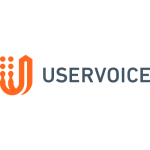Connect Wrike to UserVoice


About Wrike
Wrike is a cloud-based collaboration and project management software that scales across teams in any business. It allows companies to gain visibility, simplify their planning and streamline their workflow, giving them a better chance at long-term success, clarity, and insights.
About UserVoice
UserVoice offers product developers a single interface that collects and analyzes customer feedback from a variety of sources. This gives product makers clear, actionable insights into how to improve their offerings. UserVoice eliminates the need to send out surveys, log emails, and search through message boards when trying to understand customer experiences. When a customer reports a complaint or submits an enhancement request through UserVoice, the customer stays in the loop with updates on how their submission is being considered and resolved. This boosts customer engagement and willingness to provide feedback and ideas for product improvement in the future.
Popular Use Cases
Bring all your Wrike data to Amazon Redshift
Load your Wrike data to Google BigQuery
ETL all your Wrike data to Snowflake
Move your Wrike data to MySQL
Bring all your UserVoice data to Amazon Redshift
Load your UserVoice data to Google BigQuery
ETL all your UserVoice data to Snowflake
Move your UserVoice data to MySQL
Wrike's End Points
Wrike Accounts
Wrike Tasks
Wrike Folders
UserVoice's End Points
UserVoice Turnkey Install-less Feedback
UserVoice In-App Feedback Channel Integration
UserVoice Contributor Sidebar
UserVoice Metrics on Product Improvement Opportunities
Integrate Wrike With UserVoice Today
The no-code pipeline platform for
your entire data journey
TRY IT FREE FOR 14-DAYS

Integrates With
Get Started On Your
Data Integration Today
Powers your company decision making
and operational systems with our one-stop
ETL and data integration platforms
TRY IT FREE FOR 14-DAYS





